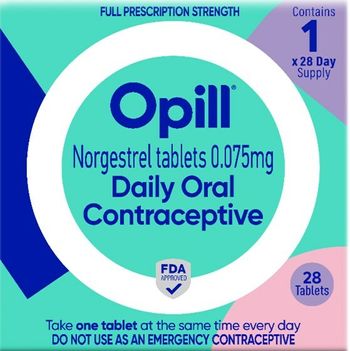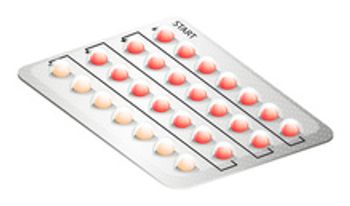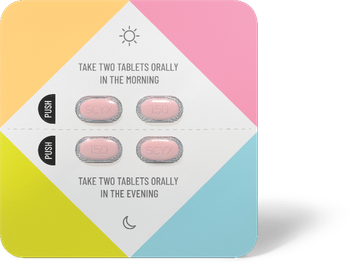
Putting a Dollar Value on the Executive Physical
Bank One used its massive database to track the impact of participation in a physical exam program on medical costs, short-term disability and lost productivity.
Putting a Dollar Value on the Executive Physical
Bank One used its massive database to track the impact of participation in a physical exam program on medical costs, short-term disability and lost productivity.
By Wayne N. Burton, MD, Daniel J. Conti, PhD, Chin-Yu Chen, PhD, Alyssa B. Schultz, MS, and Dee W. Edington, PhD
The success of a corporation depends significantly on the health and productivity of its executive workforce, and periodic physical examinations for these key players have been advocated in the United States for nearly a century. On a broader scale, periodic physical examinations are an accepted element of total health care. Indeed, a recent survey found that two out of three Americans believe annual physical examinations are necessary.
There is no question that physical examinations of a population will detect a certain number of individuals with a variety of health risks such as obesity, smoking, elevated cholesterol and high blood pressure. Exams provide opportunities for the individual and physician to fully address both physical and psychological aspects of health everything from updating immunizations to behavioral health problems and lifestyle risk factors. They can also detect disease at an earlier and more treatable stage and reassure the "worried well" that a symptom is not serious.
For employers, this might reduce the direct cost of providing benefits as well as the indirect costs of productivity lost to illness. It is also true that the executive life combining long workdays, stress and frequent travel may exacerbate health risks. A physical examination program for executives might also be used as a recruitment and retention tool.
Despite these potential benefits, the value of periodic health examinations (PHE) has been repeatedly questioned, perhaps because research on PHEs has been largely anecdotal generally summarizing clinical and laboratory findings without demonstrating an impact on medical and disability costs. A recent survey of corporate members of the Financial Executives Institute found that less than half now offer them to their executives.
Attempts to make remaining executive PHE programs more cost- and time-efficient have focused on patient variables such as age, gender and health history. More is not always better. Tracking down false positive screening results, for instance, can lead to unnecessary, invasive and potentially harmful diagnostic tests. On the other hand, a less holistic approach may increase the chance of missing subtle risk factors that surface through the doctor-patient relationship and wider screening procedures.
Shedding light on the real value of an executive physical examination program requires that health cost data and some measure of lost productivity be correlated with program participants over time. Bank One is in a position to do precisely that. To our knowledge, this is the first such study in more than 30 years.
Structure of the Bank One program
Bank One, the sixth largest U.S. bank holding corporation, is headquartered in Chicago and has approximately 75,000 employees.
Our in-house executive physical examination program dates from 1983. Participation is voluntary and at no cost to executives age 40 and over who are enrolled in the bank's self-insured indemnity plan or, in later years, a preferred provider organization. Executives selecting HMO coverage are not eligible for this program but can have a physical at relatively little cost with their primary care physician.
The standardized exam includes a complete history and physical, fasting lab tests (including complete blood count, blood chemistries, thyroid function testing, and a complete lipid profile), dipstick urinalysis, resting 12 lead-electrocardiogram, pulmonary function testing, vision/glaucoma screening and, since 1991, prostatic specific antigen for men over age 50. Additional testing such as chest X-ray, screening mammogram, flexible sigmoidoscopy and hemoglobin A1C are performed according to accepted clinical guidelines. We also ask each executive to complete a health risk appraisal. A written report with copies of the lab tests is provided to the executive for their personal physician.
In 1987, Bank One set up a health management data warehouse that integrates information on personnel, medical costs, short-term disability absences, laboratory tests, wellness and occupational nursing encounters. The PHE participants and their dates of examinations, although not the individual test results, have been documented since 1989. Thus, we could compare data for executives who took at least one physical between 1989 and 1995 to those who never had an examination during that period and subscribed to the same medical plan for at least three consecutive years.
We looked at three consecutive years for each of 1,773 subjects. Of this group, 59 percent had at least one PHE and 41 percent had none. Nearly 70 percent of those who'd had an exam were men vs. 60 percent of those who had not. The average age was just under 46.
What the data revealed
Executives who participated in the PHE program were more likely to file outpatient claims than non-participants were, but there was little difference in the likelihood of inpatient claims. The average total claims cost for PHE participants, on the other hand, was 20 percent less than that of non-participants, and their average workdays lost on short-term disability was 45 percent less.
Overall, 66.1 percent of PHE participants filed outpatient claims during the three-year study compared to 59.6 percent of non-participants. Dollar amounts of outpatient medical claims for the latter in Y1, Y2 and Y3 were $906, $977 and $844, respectively while for participants they were $865, $1,088 and $873, respectively.
[Note: These amounts do not include deductibles and co-payments. All dollars are inflation-adjusted to year 2000 dollars. Pregnancy-related claims were excluded, and multiple regression was used to adjust for age and gender differences.]
In the full three years, 8 percent of participants and 9.9 percent of non-participants filed inpatient claims. The dollar costs for inpatient medical claims paid for non-participants in years 1, 2 and 3 were $1057, $861 and $1,548 respectively compared with $464, $937 and $672 for participants.
Nearly 56 percent of the total costs for non-participants were inpatient compared with 42 percent for participants. Three-year total medical claims paid for non-participants was $6,426. That was 20 percent greater than the $5,361 paid for participants. (See chart). A second-year spike for PHE participants may have related to follow-up care for medical problems detected in the first-year exam.
Medical claims over three years
Non-participants were much more likely to file STD claims during each of the study years than were executives who had physicals. During the entire study period, 11 percent of them filed STD claims compared with only 6.2 percent of participants.
Claims and STD Experience over three years
Percent with any
Non-participants
Participants
Outpatient claims
59.6%
66.1%
Inpatient claims
9.9%
8.0%
STD
11.0%
6.2%
The total number of STD workdays lost for non-participants was 2,707 over three years compared with 2,134 for participants. After age and gender adjustment, the average lost workdays were 4.03 and 2.78 respectively, a significant 45 percent difference.
Major forces of ill health
Cancer treatment is the single most costly diagnostic for all the executives studied. It comprises 23.1 percent of the total medical claims paid for non-participants and 22.1 percent for participants. Neoplasms are the most common reason for STD among the latter, perhaps because these cancers are detected during examinations.
Circulatory medical claims represent 11 percent of total costs for PHE participants compared with 19 percent for non-participants. Participants' circulatory STD days were approximately one-half those of non-participants. One possible explanation backed up by self-reported health risk appraisal information is better control of cardiovascular risk factors such as blood pressure, cholesterol, exercise and smoking cigarettes.
Nervous system and sense organ claims comprised a significantly larger percentage of total claims for non-participants (5.7 percent) than participants (3.5 percent). The same was true for digestive system claims at 8.2 percent vs. 6.5 percent respectively.
Both the percentage of claims and the amounts paid for musculoskeletal and injury medical claims, on the other hand, were greater for PHE participants than for non-participants, as were STD workdays lost. Bank One does not have an in-house fitness center at corporate headquarters. Several fitness facilities are available within a few blocks. It is possible that these executives participating in the PHE program exercise in relatively unsupervised facilities, which results in various musculoskeletal problems and injuries. Bank One does have supervised in-house fitness centers at several worksites where very few such injuries have been reported.
Patterns in mental health
Mental health claims for non-participants were 2.1 percent of total claims paid versus 8.5 percent for PHE participants. There are several possible explanations. All of the physician examiners are experienced in identifying mental health disorders and encouraging use of appropriate services. Then, too, a clinical psychologist works on-site full time and is highly regarded by the physicians. Thus, they have a ready outlet for consultation and referral when they detect important emotional illnesses such as depression, anxiety disorders, marital discords, family issues related to the care of parents or children and occasionally alcoholism or substance abuse.
The increased use of mental health resources may have avoided other costs such as evaluation of stress related disorders (e.g. non-cardiac chest pain and gastrointestinal symptoms), but our study can present no causal links. It may be that the expenditure for behavioral health care as measured comprehensively by improvement in functioning as well as decreased costs and time connected with other treatments provided a greater value.
There were no STD mental health-related events for participants, even though there was a four-fold increase in their mental health claims in comparison to the non-participants. This investment in mental health services may account for the absence of mental health-related STD events for PHE participants.
Financial implications
While a larger percentage of PHE participants filed outpatient claims, their inpatient claims, STD absences and total costs were all lower than those of non-participants. These results confirm that routine physical exams may identify health problems sooner and are able to treat them in a less expensive manner.
Potential savings to the Bank include $1,065 in medical costs and 1.24 short-term disability days worth $596 per executive, conservatively assuming average executive annual compensation of $125,000 plus bonus or $481 per business day (1.24 x $481=$596). We recognize that many executives can make up this lost productivity by working longer hours, weekends and skipping vacation days. That possibility notwithstanding, the total indirect and direct cost savings over three years are $1,661.
PHE participants had an average of 1.8 physicals at an average cost of $400 for a total of $720. Thus, the net savings were $941 and the net ROI was approximately 2.3 to 1 ($1,661/$720). The actual ROI may be much greater when the effects of the early detection of disease are tracked for longer than three years.
We recognize that this study will not silence staunch critics of the periodic executive health evaluation, and caution that one should not generalize these results to the employee population at large. Nevertheless, it does present significant information that participants in a periodic executive health evaluation program composed of basic testing (requiring about 30 minutes) with a history and physical examination by a qualified board certified physician (requiring about 60 minutes) who is familiar with the special issues of executive health especially in relation to mental health and hardiness can reduce direct and indirect costs for a corporation.
Note: This article is based on research originally published in The Journal of Occupational and Environmental Medicine (
More Business & Health Articles on This Topic:
Resource Links:
1114 N. Arlington Heights Road
Arlington Heights, Illinois, 60004-4770
Telephone: 847/818-1800, Fax: 847/818-9266
1114 N. Arlington Heights Road
Arlington Heights, Illinois, 60004-4770
Telephone: 847/818-1800, Fax: 847/818-9266
Wayne Burton. Putting a Dollar Value on the Executive Physical.
Business and Health
2002;12.
Newsletter
Get the latest industry news, event updates, and more from Managed healthcare Executive.





















































